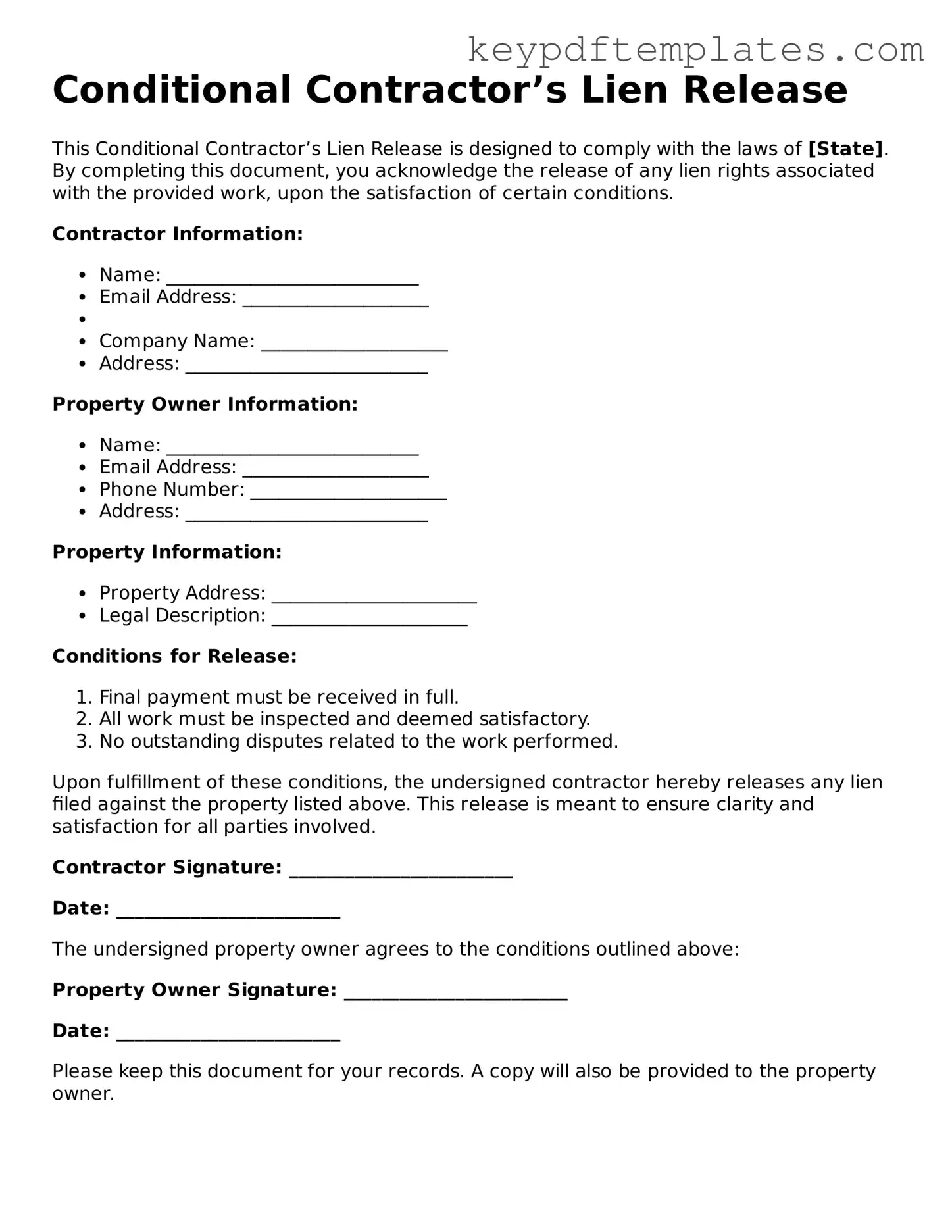Printable Conditional Contractor’s Lien Release Template
The Conditional Contractor’s Lien Release form is a legal document used by contractors to relinquish their right to file a lien on a property, contingent upon receiving payment. This form serves as a safeguard for property owners, ensuring that contractors cannot claim a lien if they are compensated as agreed. Understanding this form is essential for both contractors and property owners to navigate the complexities of construction contracts effectively.
Modify Document Online
